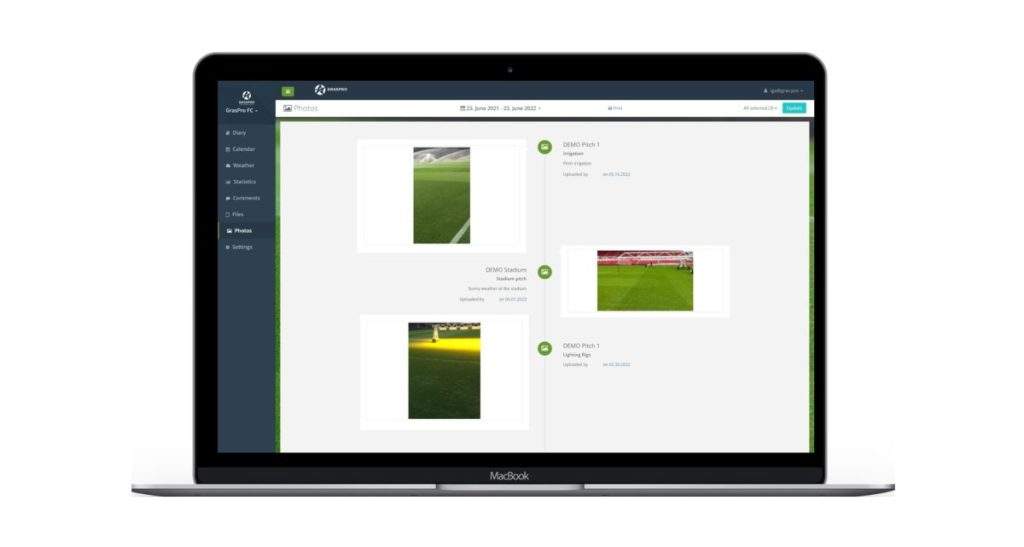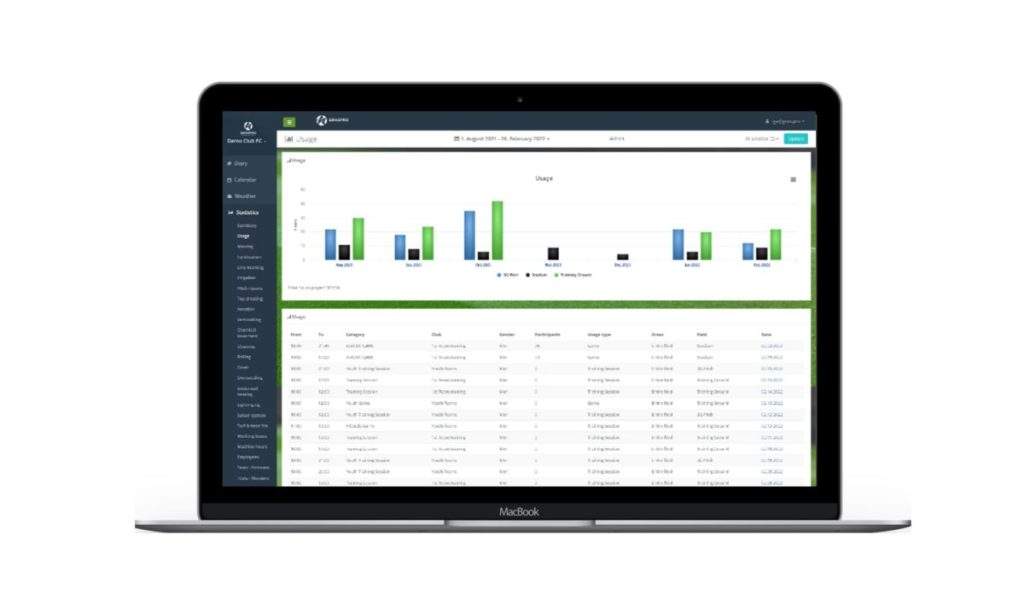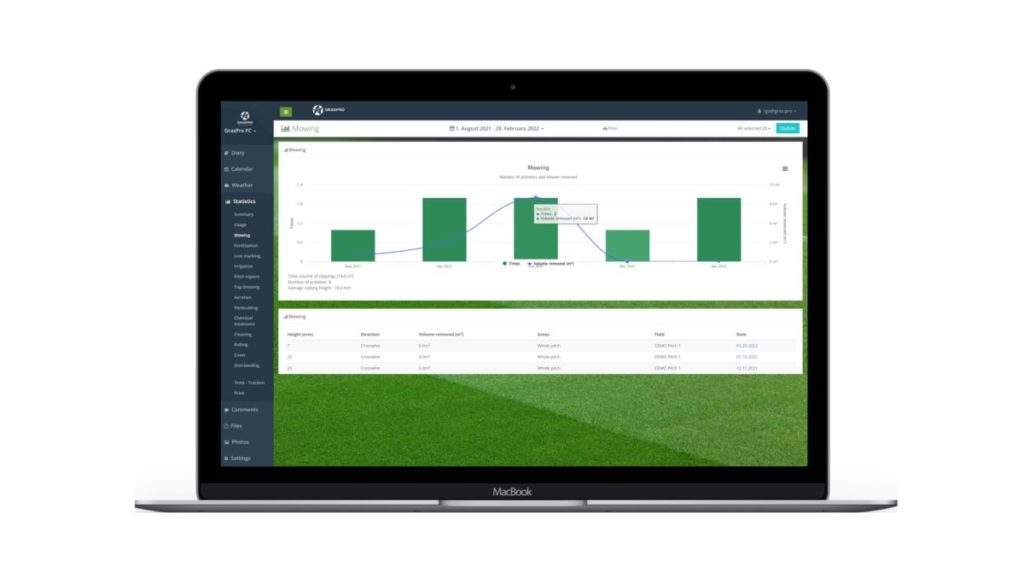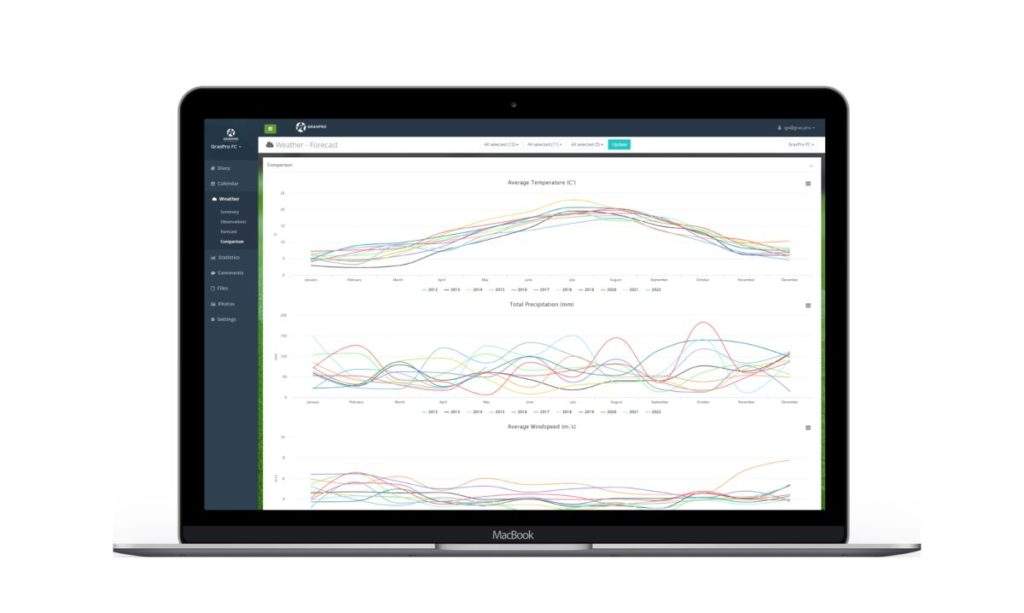How to create a preventive maintenance schedule?
Whether it is a football pitch, rugby pitch, cricket pitch or tennis court, because it is a natural living organism, it needs a range of maintenance to stay green, resilient and healthy. We recommend a preventive maintenance schedule.
When the condition of the turf does not meet expectations, it is often difficult to determine what caused the problem and how to avoid it in the future. An unplayable pitch before an important match or injuries to players caused by the condition of the grass are the biggest concerns of groundsmen.
What if there was a way to prevent such situations or minimise the risk of problems on the sports ground? By being proactive in your turf maintenance, you can avoid the high costs of reactive maintenance. In the long run, this can save you tens to hundreds of thousands of pounds or euros every year. This kind of approach is consistent with sustainable pitch management, because it is better to prevent – run preventive maintenance – than allow minor issues to become actual problems.
How to start creating your preventive maintenance programme?
Starting a preventive care schedule is simple if you have the right tools at hand. We know that groundsmen usually keep their notes on the wall in the shed or as an Excel file on their laptop. We recommend GrasPro. A place for all data and information that can easily be shared with others.
Let us start with a few tips on how to set up your first preventive maintenance programme.
1. Record the current pitch condition - observe, test and photograph.
Record the current pitch condition, take notes on the condition of your machinery and the resources available. Plan in advance what you will need.
Start taking photos of the pitch, especially close-ups of the surface, looking out for problem areas or those that could become so. You can save them with a comment about what you should observe over time. If your pitch has been renovated, take photos before and after the renovation and then when the grass has grown back.
If you use your test kit, take notes and save them as a pdf or jpg. If you measure the condition of your pitch according to the sports association’s requirements and measure moisture, traction and hardness in 5 locations, you can enter this information into the software.

2. Collect data on ongoing maintenance operations and resources.
What kind of data should you collect, and how do you keep it organised in one place? Data collection doesn’t take more than 5-10 minutes, and adding it to the system is a quick process, especially if you enter it as and when you collect or at the end of your workday. Just make it your habit. You can collect a wide range of data.
Pitch maintenance operations including tasks like:
- Mowing: machine used, cutting height, clippings, moving direction
- Irrigation: area irrigated, amount of water
- Line marking paint quantity, line width, marking type
- Fertilizing: type of fertilizer, method of application, direction, area, NPK
- Lighting rig: lighting hours per each of 18 pitch positions possible
- Aeration: machine used, depth, core thickness, hole spacing, and area impacted
and many more including verticutting, cleaning, chemical treatments, brushing, repairs, under soil heating systems, TurfBreze fans operation etc.
Pitch usage
Maximising the use of the pitch but keeping it in good condition is always a challenge. Counting the number of players, noting different teams or types of use like training, game, rehearsals, or hosting a concert.
Machinery and resources use
This can include working hours, total hours of machine use, hours until the next service and also the type of materials, e.g. sand, seeds, or fertilizer. This information is especially important when you own a large machinery inventory or need to plan orders in advance for materials.
Teamwork data is especially important when it comes to planning, work improvement and managing new staff.

3. Review historical data about pitch condition and all activities
Having all of the data organised and visually presented as charts, diagrams, and tables in one place might help you make the right decisions. Whether it means you need to prove your pitch condition after an annual renovation or you have a pitch issue that needs addressing, you have all the information at hand.
Simply put, it makes spotting trends easier. For example, that can be noticing if water usage has increased or decreased against the usual amount, pointing to a compaction, drainage issue, or unseasonal weather conditions.
Reviewing fertilizer use or chemical treatments can also be more efficient with historical data. Reliably using precisely the right amount at the correct time benefits the surface and reduces product and budgetary waste.
Even tracking your grass height and mowing pattern can benefit turf health throughout the year. Historical data means all of these decisions can be made by you with confidence at the correct times.

4. Use comprehensive weather data to plan your work
Not every team wants to have a weather station and carry it around every day to collect information about the weather. On the other hand, they are essential for decision-making, especially for irrigation, fertilization or even the use of lights.
If you need to discuss annual or quarterly water use with your supervisors when it rained twice as much last year, that’s not a problem if you have the data to back it up. If you have irrigation data and advanced weather forecasts that allow you to compare average temperature, participation, or humidity for a year, two or even 10 years back, it’s easy.
Having detailed weather information also allows you to look forward. When is the best time to spray, line mark or seed? All of those activities can be planned in advance to optimise the outcome.

5. Make predictions about the turf care needs of your football, rugby or tennis pitch
Use data on pitch use, machinery, and your team to plan ahead. Share your needs with your facility management.
Reporting to management and collating information from various sources and notes is always an extra effort for the head groundsman or turf manager. Therefore, having access to up-to-date information in one place and in real time for all interested parties allows for quick decision making. If you need to request a higher budget because your expenses for maintaining the pitch have increased.
With an online tool like GrasPro, you can demonstrate the scope of work performed, employees’ work time, utilisation of machinery and other resources in relation to the quality of the pitch over time, facilitating planning and discussions about future needs with management.
6. Verify progress and adjust as needed
With the initial preventive maintenance programme, you give your team the opportunity to familiarise themselves with the new approach to maintenance, while also giving you the chance to understand how you can use GrasPro data to optimise your schedule.
Starting with just keeping track of data gives you the chance to demonstrate the significant impact it has on your club’s bottom line and operations workflow. Whether you need to get approval from club or venue supervisors, or whether you want to be prepared for any situation, at this point you will be able to do so.
Start your data journey now!
Leave your contact details to find out more.


